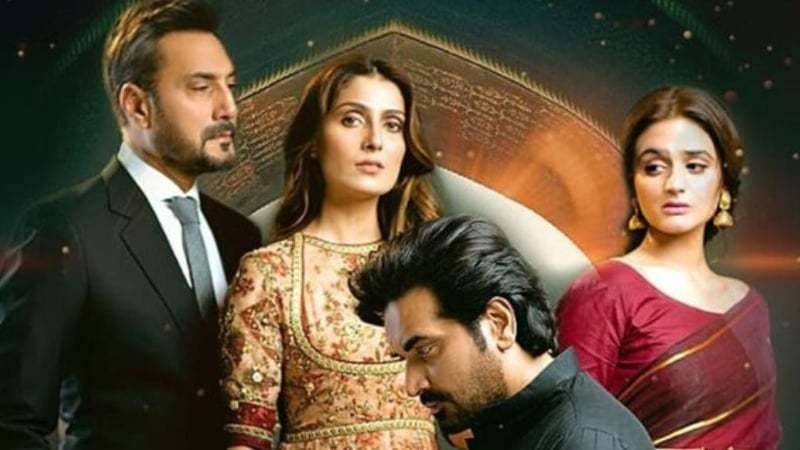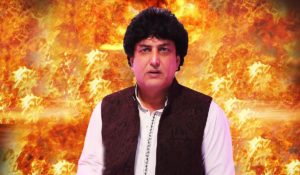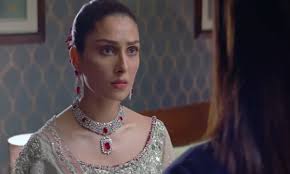
The Pakistani drama 'Meray Paas Tum Ho' is the most successful hoax South Asian invented after the WaterKit gate. I'm so glad it's finally over, but here are ten problematic things about the play.
1. It’s written by a man
2. It’s written by a man who decried feminism as a disease ignoring the fact that he, like all other men, has made his existence possible from the loins of a woman.

3. It has dialogues like “Doo takey ki aurat” in it which loosely translates into a slut of a woman, because in this context the takaa comes from forced celibacy.
4. People believe that a 'gold digger' or materialistic woman deserves that slur. The drama has convinced everyone that as long as it is deserved, slut-shaming a woman is okay.
5. There is a patient man who is married to the “doo takay ki aurat” played by actor Humayun Saeed, who apparently epitomizes the giving nature of Pakistani men. Sadly, in real life no such man exists in 1000 KM of the sub-continent.
6. Women are sick and tired of love triangles. There are 62 genders, for your information.
7. There is nothing wrong with the “doo takey ki aurat” being materialistic - especially if you a dowry seeking society looking forward to a woman walking into a marriage with something to bargain for her self worth. Things like diamonds and soap bars.

8. This epic dialogue: “Tum itni khoobsurat ho ke dekh k rashk aata hai, aur tum itni badsurat ho k tmhare mun pe thookne ka dil kerta hai” (You are so beautiful that one envies you and so ugly that one would want to spit on your face) says a lot about the obsession with female beauty via the male gaze.
9. The fact that women like Haseena Moin, Mehreen Jabbar, Sharmeen Obaid Chinoy have set a precedent for eliminating gender roles from the Victoria era is ignored. Woman-hating Khalilur Rehman Qamar comes along and writes the Mein Kempf version of misogyny and is celebrated for his plot and dialogue.
10. The author’s gang rape analogy is so crass. That’s not the issue - the problem is that we are so starved of leaders with character in Pakistan that this kind of content trends. That it was one of the most-watched plays in Pakistan's recent history is quite telling.
1. It’s written by a man
2. It’s written by a man who decried feminism as a disease ignoring the fact that he, like all other men, has made his existence possible from the loins of a woman.

3. It has dialogues like “Doo takey ki aurat” in it which loosely translates into a slut of a woman, because in this context the takaa comes from forced celibacy.
4. People believe that a 'gold digger' or materialistic woman deserves that slur. The drama has convinced everyone that as long as it is deserved, slut-shaming a woman is okay.
5. There is a patient man who is married to the “doo takay ki aurat” played by actor Humayun Saeed, who apparently epitomizes the giving nature of Pakistani men. Sadly, in real life no such man exists in 1000 KM of the sub-continent.
6. Women are sick and tired of love triangles. There are 62 genders, for your information.
7. There is nothing wrong with the “doo takey ki aurat” being materialistic - especially if you a dowry seeking society looking forward to a woman walking into a marriage with something to bargain for her self worth. Things like diamonds and soap bars.

8. This epic dialogue: “Tum itni khoobsurat ho ke dekh k rashk aata hai, aur tum itni badsurat ho k tmhare mun pe thookne ka dil kerta hai” (You are so beautiful that one envies you and so ugly that one would want to spit on your face) says a lot about the obsession with female beauty via the male gaze.
9. The fact that women like Haseena Moin, Mehreen Jabbar, Sharmeen Obaid Chinoy have set a precedent for eliminating gender roles from the Victoria era is ignored. Woman-hating Khalilur Rehman Qamar comes along and writes the Mein Kempf version of misogyny and is celebrated for his plot and dialogue.
10. The author’s gang rape analogy is so crass. That’s not the issue - the problem is that we are so starved of leaders with character in Pakistan that this kind of content trends. That it was one of the most-watched plays in Pakistan's recent history is quite telling.
